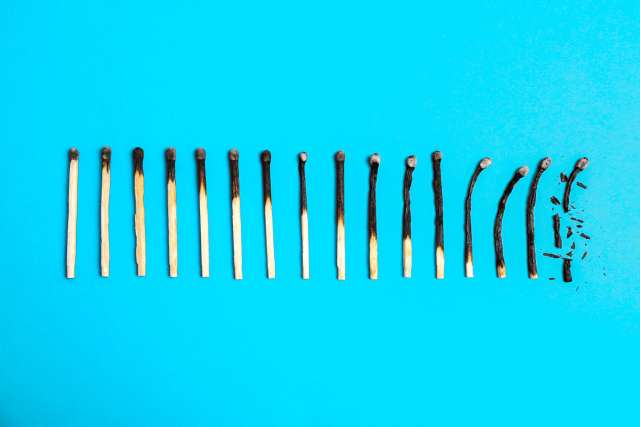IF THERE’S A WORK COHORT WE ALL HAVE A VESTED INTEREST in keeping happy and healthy, it is primary care doctors. By one estimate published in 2021, the U.S. is expected to be short by between 17,800 and 48,000 primary care physicians by 2034, and nearly one-third of current primary care docs reported being burned out.
Talk to any primary care physician for more than a minute and you will likely get an earful about crushing workloads and frustration over too-short appointment times during which they often are tethered to a tablet or laptop, recording everything to satisfy regulatory and insurance-reporting requirements.
All of that raises the stakes on how to guide primary care doctors toward best practices in a way that does not add to their discontent.
Against this backdrop, research published in the Proceedings of the National Academy of Sciences finds that a nudge that compared physicians with one another undermined their job satisfaction and failed to improve their performance.
In a five-month study involving 199 primary care doctors and 46,631 patients in the UCLA Health system, physicians were sent feedback about how their job performance — specifically, the track record of their patients in scheduling recommended preventive care tests — compared with the performance of other doctors. The physicians who received this peer-comparison information reported significantly higher levels of burnout and lower levels of job satisfaction than those who did not receive the peer-comparison nudge.
Moreover, the nudge itself didn’t improve the rate at which preventive procedures were scheduled.
The researchers [from UCLA Health and the David Geffen School of Medicine at UCLA, the UCLA Anderson School of Management, UC San Francisco and Central Michigan University College of Medicine] further found that the negative psychological cost was mitigated when the peer-comparison nudge was paired with training to help leaders better support physicians’ job performance and put into proper context the metrics used in the feedback.
While this research focused on primary care physicians, the key findings may offer valuable management insights that transcend industries.
The initial focus of the research was to explore whether or not a peer-comparison nudge would compel primary care doctors to get more of their patients to undergo recommended preventive care, such as routine screenings. That didn’t move that performance despite other research that shows that such an approach can work in reducing the over-prescription of antibiotics, improving emergency department efficiency and boosting medical quality of care. The researchers discuss possible reasons for that difference with prior research. Their focus, however, lies in unpacking the negative effects on wellbeing.
Doctors’ performance was tracked with a “health-maintenance-completion rate,” which summarizes the share of recommended preventive-care measures that a doctor’s patients completed in the previous three months. The experiment had a control group of doctors who were simply presented with this health-maintenance-completion rate. Doctors in the peer-comparison treatment group were additionally shown a list of the 25 doctors who had the highest completion rates, as well as information about where the peer-comparison-group doctors personally ranked compared with these “top performers.”
On a scale from 1 (extremely dissatisfied) to 7 (extremely satisfied), doctors in the control group reported higher job satisfaction (5.5) than the doctors in the peer-comparison group (5.0). The burnout rating (on a 1-to-5 scale) was higher for those in the peer-comparison group (2.5) than the control group (1.9). A third group received the peer-comparison nudge, but they were managed by leadership that had received explicit training to create a supportive and collaborative framework for the “why” behind the metrics used in the comparisons. Among this third group, reported job satisfaction (5.3) and burnout (2.1) were statistically indistinguishable from the levels seen in the control group.
Though the intended 12-month experiment was truncated to five months due to the onset of the pandemic, the researchers circled back to doctors four months after the intervention had ended, and they found that the decrease in job satisfaction among the peer-comparison group had persisted.
Doctors were also asked to rate how supported they felt by leadership (on a scale from 1 to 5). Furthering the notion that peer-comparison nudges may work better when delivered within a positive, supporting context, doctors in the control group (3.5) and those who got the nudge delivered with leadership training (3.6) felt significantly more supported than those who received only the peer comparison intervention (3.0).
Based on qualitative feedback from doctors, the researchers posit that the negative consequences may be a function of doctors being frustrated by the “reductionist” approach to evaluating them on a single metric. Doctors were also upset by the nudge because it pitted doctors against one another in an environment where collaboration is the norm.
The authors share general lessons for managers about the importance of first understanding how a nudge’s design and implementation may be perceived by the target population before scaling their interventions. Their findings should be of interest to all managers eager to harness behavioral science to drive performance and wellbeing.
“When leaders offer the necessary context and support to accompany a peer-comparison intervention, recipients may draw more positive inferences about their leaders’ intent. This can buffer against the harmful effects of peer-comparison interventions on wellbeing,” the authors conclude.
